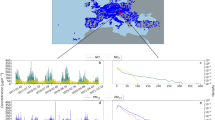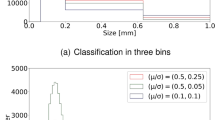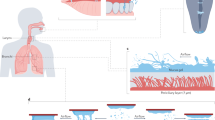Abstract
The statistical properties of the impact or toxic load (pollutant concentration raised to an exponent and multiplied by exposure duration), obtained from fluctuating concentrations in a plume dispersing in the atmosphere, are investigated both analytically and experimentally. A general expression for the kth order moment of the impact is derived in terms of the k-time point joint moment of the nth power of the fluctuating plume concentration field. Special cases of this general relationship are treated explicitly: (i) a simple model for the ensemble-mean impact (or equivalently, the ensemble-mean impact ratio) is derived on the basic hypothesis that the higher moments of concentration can be adequately modelled using an exponential probability density function (PDF), and this hypothesis is shown to give results that agree remarkably well with an extensive new set of concentration fluctuation measurements; and (ii) a model for the integral time scale of the process obtained by raising the concentration to the nth power is formulated using Gifford's meandering plume model, and the latter is subsequently used to derive a simple expression for estimating the impact variance for all exposure times, given the mean and mean-square concentrations and the plume concentration integral time scale only. The results of this model for impact variance are favorably compared with some data from full-scale field experiments. The impact PDF is found to be reasonably well-characterized by a clipped-normal PDF for exposure times, te, of practical interest (e.g., t e≳5 s). The implications of these results, for determining the fraction of an exposed population that will experience a specified level of effect from a random impact arising from exposure to a fluctuating plume of pollutant, are discussed briefly.
This is a preview of subscription content, access via your institution
Access options
Subscribe to this journal
Receive 6 print issues and online access
$259.00 per year
only $43.17 per issue
Buy this article
- Purchase on Springer Link
- Instant access to full article PDF
Prices may be subject to local taxes which are calculated during checkout
Similar content being viewed by others
Author information
Authors and Affiliations
Corresponding author
Rights and permissions
About this article
Cite this article
YEE, E. An impact–effect mathematical model incorporating the influence of exposures to fluctuating concentrations in a dispersing plume of pollutant in the atmosphere. J Expo Sci Environ Epidemiol 9, 300–311 (1999). https://doi.org/10.1038/sj.jea.7500031
Accepted:
Published:
Issue Date:
DOI: https://doi.org/10.1038/sj.jea.7500031
Keywords
This article is cited by
-
Probability law of concentration in plumes dispersing in an urban area
Environmental Fluid Mechanics (2009)



